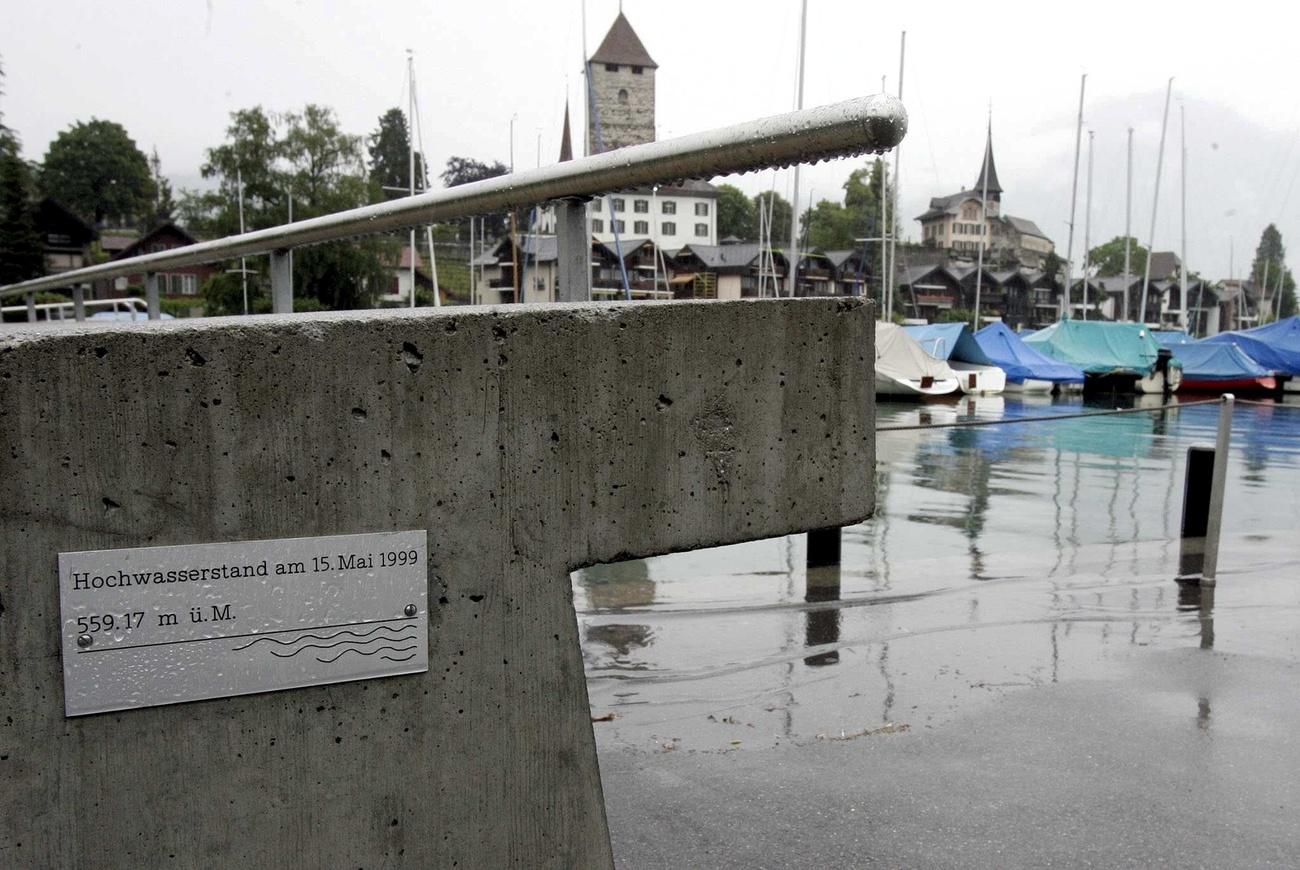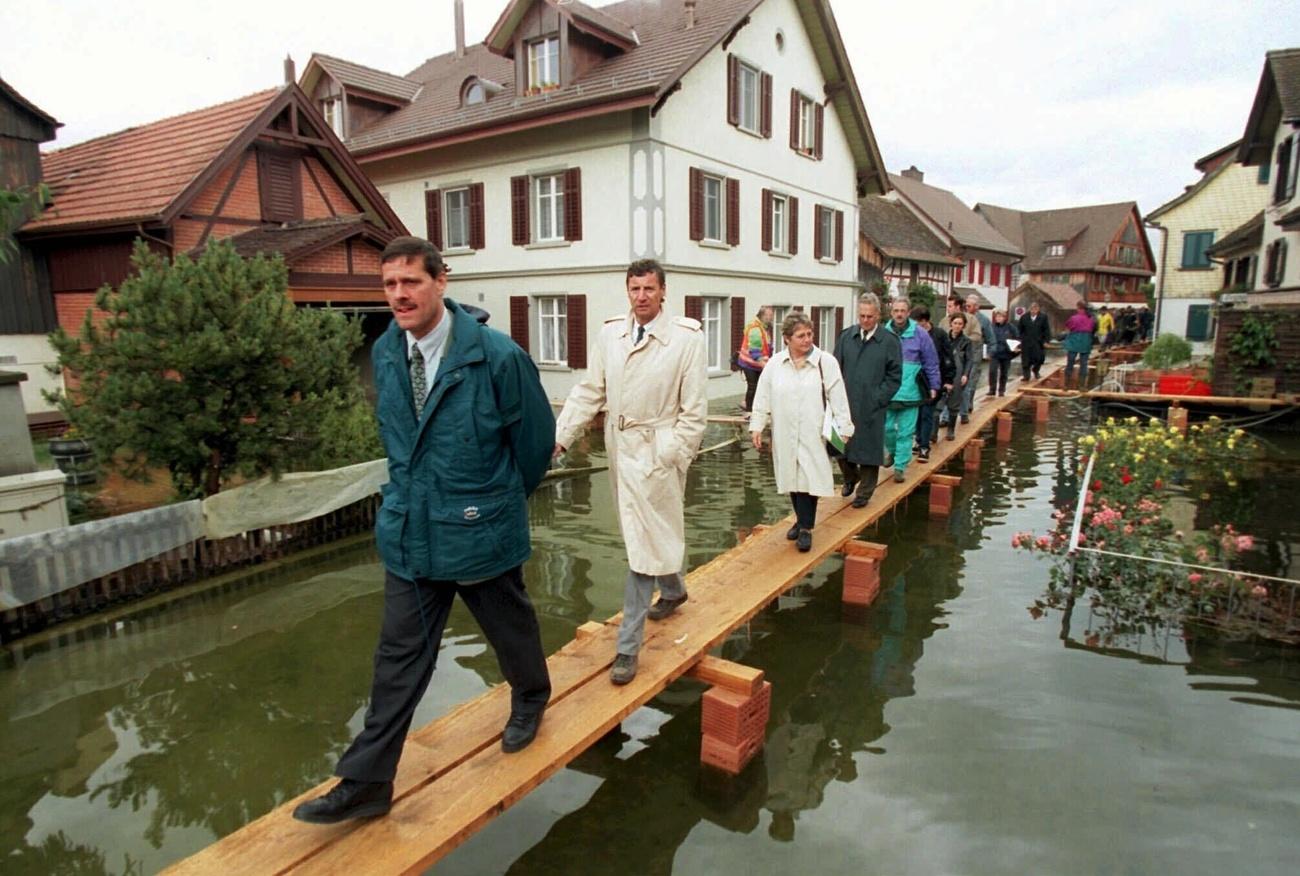Small-town Swiss vote provides a lesson in flood prevention

When I removed the white leaflet from the voting envelope, my first impulse was to discard it right away.
The dispatch, which appeared punctually a few weeks before this Sunday’s vote, outlined a budgetary issue that would boggle the mind of even the savviest of CFOs.
Yet it’s up to me and my fellow citizens in this small Alpine community to take a momentous decision on how millions of francs are allocated. I have enough difficulty keeping my own household spending in check.
This time around, we aren’t being asked to approve a credit to renovate a local schoolhouse or for other essential upgrades, which I usually agree should be done as a matter of course to maintain quality of life.
This time we will be granting approval for measures to deal with the consequences of climate change, given the overwhelming scientific evidence that global warming is responsible for an increase in extreme weather events.

Specifically, my town’s executives are asking me to approve the construction of a protective embankment and installation of a 500-metre-long pipeline to provide flood relief for a stream.
The small tributary is usually very efficient at draining runoff from the mountainside, carrying it into the nearby lake. But experts reckon additional capacity is necessary to deal with major flooding they say can occur every 30 years, putting at risk homes and infrastructure near the shore.
Reading the document, I was reminded of the devastating flooding in large parts of my homeland, Canada, this spring, and a comment External linkby a professor who studies the environment that the country simply wasn’t prepared. He said a universal system of flood mapping, which would enable local authorities to make informed decisions about zoning and prevention, didn’t exist.
That sounded very familiar. Twenty years ago, Switzerland was hit by the “flood of the century”, only to be followed a few years later by another incident of once-in-a-lifetime proportions. I not only reported on these events, but also on the admission that the country’s hazard maps (risk assessments for flooding, rock- and landslides and avalanches) were incomplete.
But a lot has happened in Switzerland in the intervening years. The authorities set to work to complete the mapping, the federal and cantonal governments put aside money for mitigation initiatives, and local communities like mine have tapped into this new funding to take action.
As a result, pipelines have been laid under towns and floodplains dug along the river that flows out of the lake to the capital, Bern. And soon my community will have done its part – as long as I, and a majority of my fellow citizens, tick the right box on the voting form.
But it will likely take years for Canada to catch up. The situation is even more dire in nations that are neither wealthy like Switzerland or Canada, nor can count on good governance. Flooding, droughts and wildfires are set to increase in frequency and severity, the United Nations scientific panel on climate changeExternal link said last year, if greenhouse gas emissions continue to rise at current rates.
Contact the author on Twitter @dalebechtel

More
When the ‘flood of the century’ crippled Switzerland

In compliance with the JTI standards
More: SWI swissinfo.ch certified by the Journalism Trust Initiative

You can find an overview of ongoing debates with our journalists here. Please join us!
If you want to start a conversation about a topic raised in this article or want to report factual errors, email us at english@swissinfo.ch.